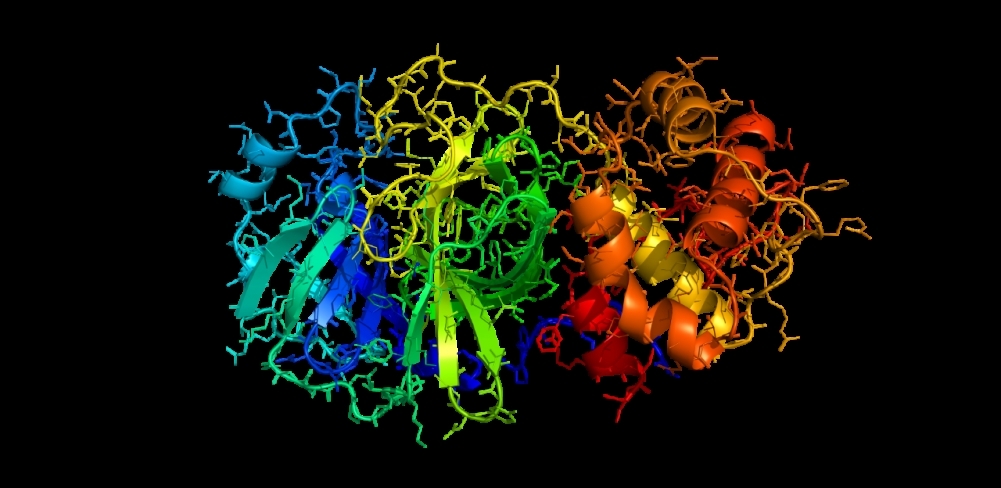


Assembled over a five-year period by the University of São Paulo’s Medicinal Chemistry Group, the material will be tested for treating infected cells. The goal of the research is to find a compound that inhibits the key enzyme in the replication of SARS-CoV-2 without affecting human cells (image: three-dimensional model of one of the novel coronavirus proteases / Wikimedia Commons)
Published on 03/19/2021
By José Tadeu Arantes | Agência FAPESP – More than 500 bioactive substances will be tested to determine whether they can be used to combat the novel coronavirus SARS-CoV-2. The material is the result of five years of research into treatments for Chagas disease conducted by the Medicinal and Biological Chemistry Group at the University of São Paulo’s São Carlos Institute of Chemistry (IQSC-USP) in Brazil. The project is supported by FAPESP, and the principal investigator is Professor Carlos Alberto Montanari, who leads the group.
The possibility that one or more of these substances can destroy SARS-CoV-2 will now be investigated in the project “Molecular design and synthesis of SARS-CoV-2 main protease (SARS CoV-2 Mpro) inhibitors”, also led by Montanari and supported by FAPESP’s Fast-track Supplements for Projects against COVID-19.
“Our goal is to find a substance capable of inhibiting SARS-CoV-2 Mpro, the main enzyme used by the virus to replicate. If we do, we will have a potential antiviral agent,” Montanari told Agência FAPESP.
“The virus is not alive. It must invade human cells to reproduce. It uses the cellular structure as a replication mechanism. Enzymes play a key role in this process, breaking down the chemical bonds in molecules and releasing energy. Humans also depend on enzymes to digest food, and some viral enzymes are similar to ours. If we can inhibit Mpro, the main enzyme used by SARS-CoV-2, without inhibiting our own human proteases, this can be a way to prevent viral replication, which is the aim of researchers worldwide.”
The researchers at IQSC-USP plan to conduct phenotypic assays that will test candidate substances in live cellular systems. The next step following a positive result consists of identifying the molecular mechanism involved in the process to optimize the substance’s properties. “Many steps are required until we can arrive at a drug that can be used safely by the general public, but they are feasible in light of the high degree of scientific rigor in our own lab and other facilities in Brazil and elsewhere,” Montanari said.
The assays will be conducted by researchers Lucio Freitas-Junior and Carolina Borsoi Moraes in the Biosafety Level 3+ Laboratory at the University of São Paulo’s Biomedical Sciences Institute (ICB-USP) in São Paulo.
This first stage of the process includes the curating of clinical trials relating to COVID-19, and more than 1,500 studies of this kind are under way in several countries. It also includes the mapping of gene-disease-drug interactions to identify drugs used to treat other diseases that can be deployed against COVID-19. “This is extremely important because we already know a lot about these drugs and how the human organism responds to them,” Montanari said.
Target-molecule interactions will also be mapped in the current stage using machine learning and an intelligent digital drug discovery platform. Machine learning will be applied to cross-reference data and information between the Medicinal Chemistry Group’s library of substances and protein/cellular targets related to COVID-19.
Another task being performed by the group concerns molecular docking of the substances with Mpro (the virus’s main protease). Docking is a molecular modeling method that predicts the preferred orientation of one molecule to another when the two molecules bind to form a stable complex.
“As a result of these studies, our group has already identified nine novel candidates, and the substances in question are now being synthesized,” Montanari said.
Source: https://agencia.fapesp.br/33577